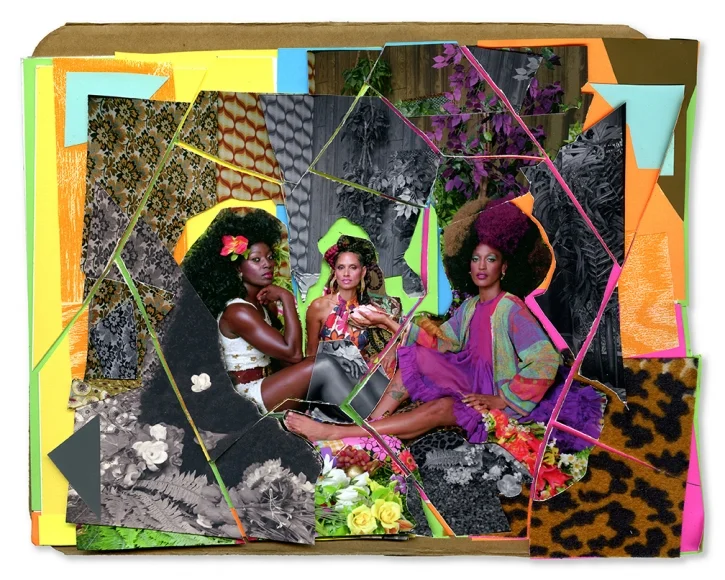Exhibition Review: blood in D minor, Catalina Ouyang
Catalina Ouyang, Film still from blood in D minor, 2018. Courtesy of Selena and the artist.
by Larayb Abrar
Hidden away in a small apartment living room in Bushwick is Selena, a self-identified DIY space dedicated to showing works by artists of color. Its final show at its current location is blood in D minor, a solo exhibition by Asian-American artist Catalina Ouyang. The exhibition features two major works: a two-channel video auto-tuned to the key D minor and a sculpture made of dehydrated lotus roots inspired by Nezha, an androgynous protection deity in Chinese folk religion. Taken together, these pieces are meant to examine the ways in which the body is created, destroyed and sacrificed, specifically in the contexts of gender dynamics and diaspora.
In the video, we see the camera panning over a flaming acupuncture diagram as a stoic voice in the background recites Buddhist nuns’ poetry and musings on the body. As this video fades out, the screen adjacent to it comes to life, playing a video of a running fox. In the background we hear this same stoic, lone voice reading from the script of the movie Pretty Woman (1990). The two-channel video presents to us a series of cycles and chiastic occurrences. Looping from one screen to another, the video depicts the never-ending nature of bodily sacrifice, consumption and sexual commodification dating from ancient times, as seen in the burning body, to present day, as seen from the pop culture reference of the Pretty Woman script recitation.
Catalina Ouyang, Untitled, 2018, Dehydrated lotus root, binder rings, saran wrap, fluorescent lights, takeout containers, epoxy clay, ginger, water, lilies, olive oil, beeswax, cotton twine, beach pebbles, Dimensions variable. Courtesy of Selena and the artist.
“Having been a sex worker myself, this piece is especially close to me,” says Ouyang. She went on to describe how being a sex worker often implies both physical and emotional sacrifice, citing the common literary and film trope of the prostitute with a heart of gold who “cures” the male protagonist of his burdens, and yet has their narrative short-changed. Ouyang also compares this experience to the difficulty of navigating the intersections of class, gender and race as a member of a diasporic community in the United States. She referenced the trend of minority immigrants often having to sacrifice and toil away in a foreign country just to serve the narrative of the majority while undergoing a constant process of being destroyed and being re-born, also seen in the way the burning body on screen can represent at once destruction as well as re-birth.
Catalina Ouyang, Untitled, 2018. Courtesy of Selena and the artist.
Sprawled on the wooden floor of the space is the sculpture inspired by the androgynous deity, Nezha. As the story goes, they were hunted by the bloodthirsty Dragon King Ao Guang, as consequence for their birth. Eventually, Nezha brutally kills themself to protect their family and town, returning their dismembered bones to their parents to repay the debt of their birth. Nezha was later resurrected with a body made of lotus roots, to continue to protect their people against powerful demons. Surrounding this sculpture are handmade candles created using take-out containers, ginger, water, lilies, olive oil and beeswax. The floor arrangement coupled with the video – with their infusion of Chinese myths, use of natural products and allusions to herbal healing practices – are meant to de-center dominant Western thought typically present in most artwork and pop culture.
“When I think about it, my mother doesn’t know about mainstream American references, my grand-parents don’t know of any mainstream American references. So much of what we think of as ‘standard practice’ are inherently exclusionary and oppressive because of the years and years that went into discrediting Eastern thought,” Ouyang laments. The small, DIY space works in the artist’s favor as her installation questions these dominant Western ideas through images of destruction, re-creation and preservation and develops a visual vocabulary for diasporic voices.
blood in D minor is open for viewing upon appointment at Selena, on 37 Troutman Street until July 28, 2018










